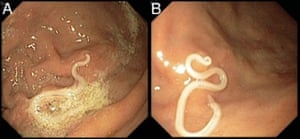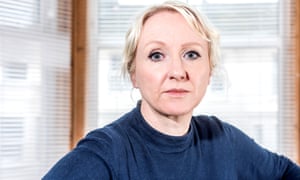Doctors are warning that the rise of an almost untreatable superbug, immune to some of the last-line antibiotics available to hospitals, poses a serious threat to patients.
The number of lab-confirmed cases of the bug, called carbapenemase-producing Enterobacteriaceae (CPE), rose from three to nearly 2,000 in the 12 years to 2015, according to Public Health England (PHE). But that may be far short of the real number because hospitals are not compelled to report suspected cases. PHE admits it does not know where the infections are coming from or how many people are dying.
Freedom of information requests made by the Bureau of Investigative Journalism reveal that at least 81 people infected with CPE have died since 2009 at 66 NHS trusts in England – although the bug may have been a complicating factor rather than the main cause of death in some cases.
But the real figure is almost certain to be much higher. Many trusts did not respond to the requests or were unable to supply complete data. Out of 136 NHS hospital trusts that were asked for the numbers of infections and deaths between 2009 and 2016, 97 responded but nearly half did not have data on CPE or could not extract the details.
In Manchester and London, dealing with CPE has cost NHS trusts almost £10m. There have also been confirmed outbreaks in Liverpool, Leeds, Sheffield, Birmingham, Nottingham, Colchester, Edinburgh, Belfast, Dublin and Limerick, among others.
Elsewhere, Italy had only sporadic cases of CPE in 2009 but by 2014, the bugs were rife across the country. “If you look at Italy they’ve suspended bone marrow transplant programmes,” said Dr Matthew Laundy, consultant medical microbiologist at St George’s University Hospitals NHS Foundation Trust. “If you’ve got no antibiotics to treat CPEs you’re stuck.”
Experts are calling for reports of suspected CPE infections to be made mandatory. The numbers revealed by the Bureau are “shocking,” said Val Edwards-Jones, emeritus professor of microbiology at Manchester Metropolitan University.
“It should absolutely be mandatory for trusts to report this,” she said. “If you go back to the 1990s MRSA [reporting] wasn’t mandatory. It was only when hospitals did proper surveillance and began looking at the bugs in the blood that we knew the scale of the problem. Then it was found that there were certain things that weren’t being done correctly.”
Dr Michael Cooper, a consultant microbiologist and director of infection control at the Royal Wolverhampton NHS Trust, said: “If something’s not mandatory, it’s the places doing well that take care to report. You don’t get figures from the trusts with their head in the sand, the poor performers.
“Public Health England have no idea how many people are dying, they’ve no outcome data. This is a serious mistake.”
CPE is carried harmlessly in the gut, but may kill if it enters the bloodstream through a wound of a patient who is already sick or frail, which makes it a real danger in hospitals. About 40-50% of patients with a CPE bloodstream infection die. CPE is not untreatable, but it is difficult as antibiotic combinations or older, more toxic drugs have to be used.
CPE, dubbed the “nightmare bacteria” by Tom Frieden, former head of the Centers for Disease Control and Prevention in the USA, has developed resistance to the carbapenems, a group of “last resort” antibiotics that are used in serious infections when other drugs will not work. They include KPC (Klebsiella pneumoniae carbapenemase) and NDM (New Delhi Metallo-beta-lactamase).
Experts have warned that antibiotic resistance is a major threat to the world and could turn the clock back on medical advances by making some surgery, such as heart transplants, impossible.
There are high levels of CPE in India, Bangladesh, Pakistan, the Middle East, south and Central America, China, southeast Asia, Taiwan, Japan, some countries in southern Europe and the USA. In February the World Health Organisation named carbapenem resistant bugs a “critical priority” for which new antibiotics are urgently needed.
In 2014, the medical directors of both Public Health England and NHS England took what they called “the unusual step” of writing to all NHS Trust chief executives, urging them to take action to prevent the spread of CPE.
“CPE represents one of the most serious emerging infectious disease threats that we currently face, and the failure to control their spread now, while we still have the opportunity, could have substantial human health and financial consequences,” wrote Dr Paul Cosford and Sir Bruce Keogh.
However, Professor Alan Johnson, head of the department of healthcare-associated infection and antibiotic resistance at PHE, said patients should be reassured that infections caused by CPE can usually be treated with other antibiotics. Fewer than 2% of E coli or Klebsiella bloodstream infections are resistant to carbapenems, he said.
“We carry out enhanced surveillance on carbapenem-resistant bacteria to determine the numbers and different types of CPE. Although reports of CPE have increased recently, part of this may reflect increased laboratory testing of many sample types other than blood stream infections, as awareness of CPE has grown,” he said.
Manchester
New figures show that four times as many people have died as had previously been reported in an outbreak in Manchester.
In 2009, the first cases of a type of CPE called Klebsiella pneumoniae carbapenemase were detected. In 2014, the hospital trust confirmed that 14 people had died from this infection, contracted within the hospital, in the previous four years.
But the Bureau’s research shows that there have been 61 deaths in the last seven years, including a six-year-old boy with leukaemia who caught the infection while undergoing a bone marrow transplant.
Many of those affected were very ill and had underlying medical problems and so it is not known whether the infection directly caused their death. Some may have died with a CPE infection rather than from it.
An investigation into the outbreak found in 2015 that CPE bacteria were living in the hospital kitchen sinks and handwash basins, which had drains that allowed splashback. Hugh Pennington, a leading microbiologist who chaired official inquiries into E coli outbreaks in 1996 and 2005, said such basins elsewhere in the NHS should be replaced. “It’s all about sound plumbing. It’s not rocket science. If your sink is going to spread the bug, get rid of it.”
Almost untreatable superbug CPE poses serious threat to patients, doctors warn



